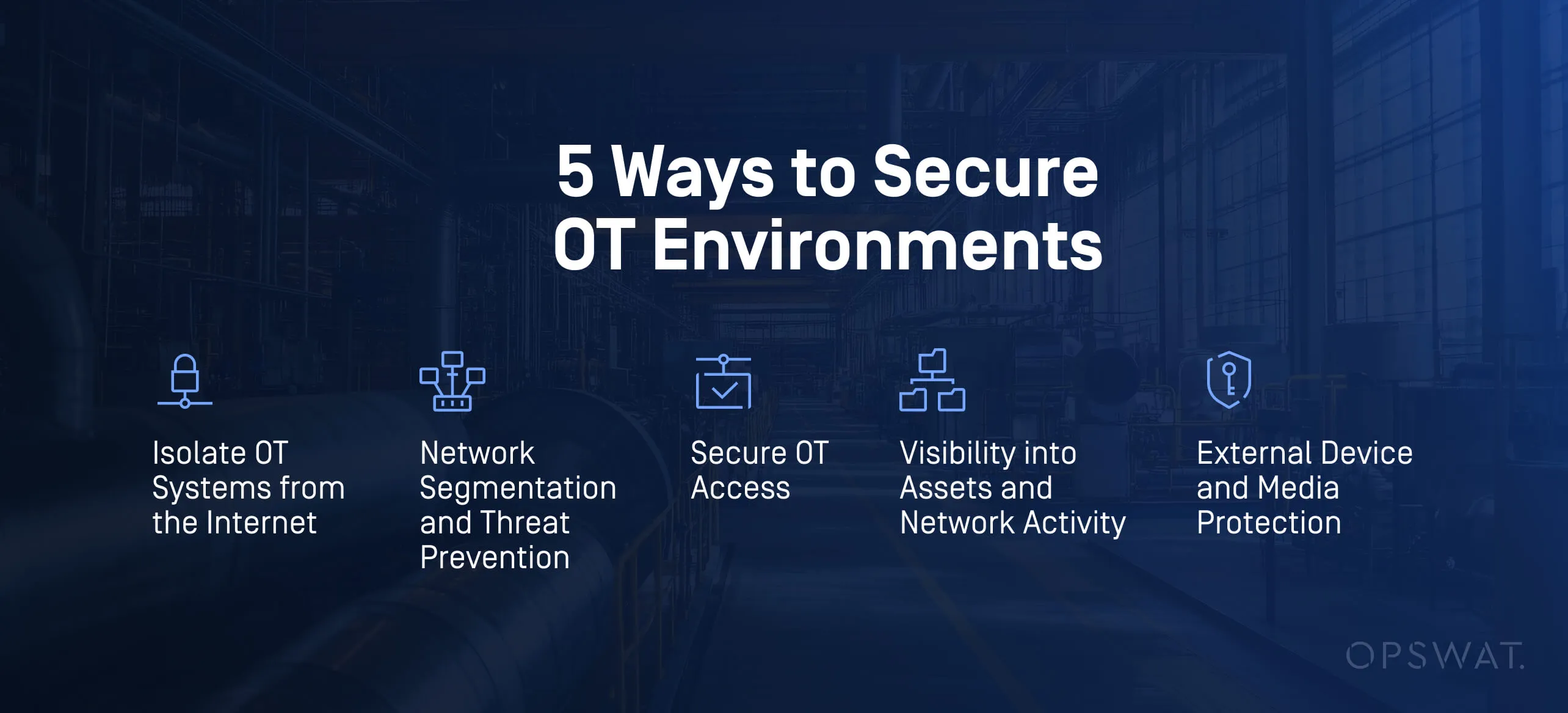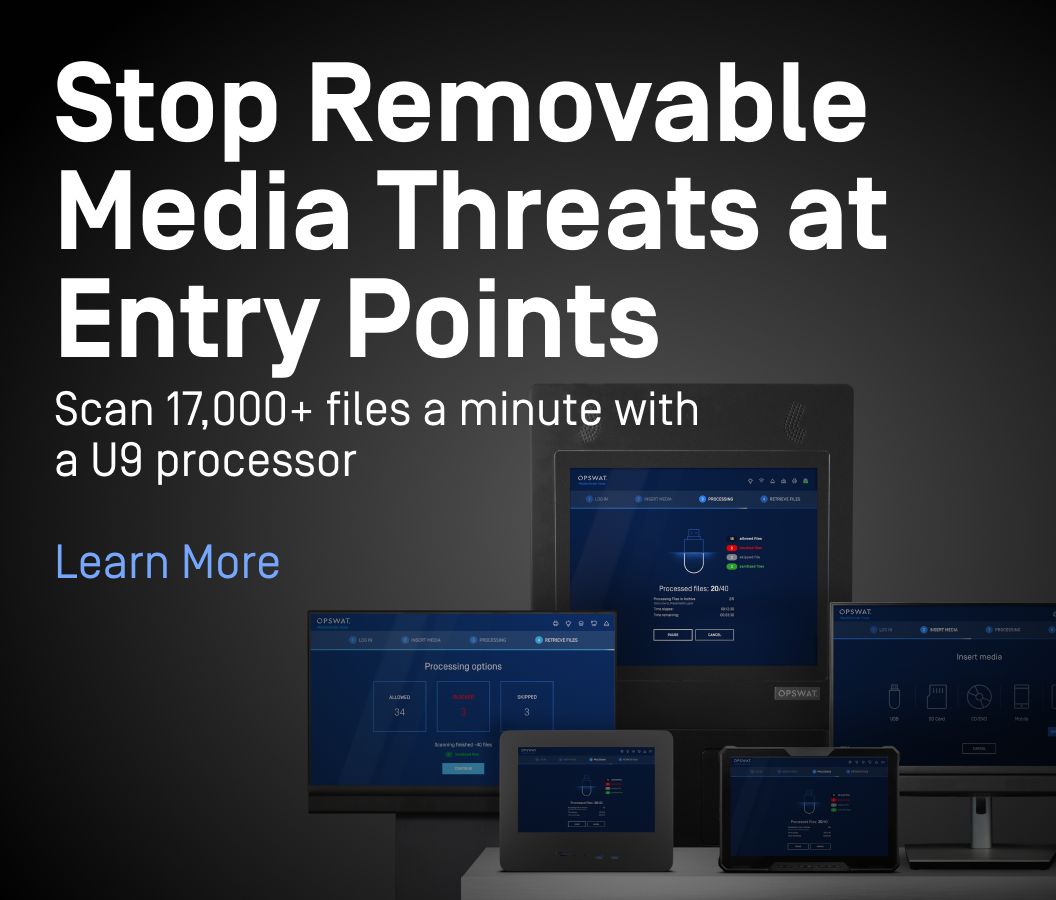On May 6, 2025, CISA (Cybersecurity and Infrastructure Security Agency) issued a stark warning: cyberthreats targeting OT systems are on the rise. While these attackers may not always deploy the most advanced tactics, their impact can be devastating—especially when they disrupt critical infrastructure sectors like energy, water, and transportation. Just last year, 70% of attacks involved critical infrastructure. Malware was deployed in 40% of the cases and ransomware was the malware of choice, occurring in 30% of malware deployments.*
In an era where the reliability of public services depends on the resilience of connected systems, OT threat defense is not optional—it’s critical.
Why OT is Vulnerable
OT systems operate the machinery and physical processes that keep essential services running. Unlike traditional IT systems, OT was historically designed for safety and uptime—not cybersecurity. As digital transformation and IT/OT convergence accelerate, these once-isolated environments are now exposed to the same threat landscape as enterprise IT networks.
Common threat vulnerabilities include:
- Outdated and unpatched systems
- Insecure remote access
- Poorly configured devices
- Human error and lack of cyber hygiene
The Cost of OT Cyberattacks
The consequences of an OT breach extend far beyond data loss. Key risks include:
- Operational Disruptions: Even unsophisticated attacks can halt production lines, disable energy grids, or interrupt water treatment systems.
- Safety Hazards: In industries like healthcare and utilities, cyber incidents can directly impact human safety.
- Financial Losses: Recovery from an OT incident can be costly—ranging from regulatory fines and cleanup costs to lasting reputational damage.
This combination of legacy infrastructure and increasing connectivity creates a high-stakes target for attackers.
5 Ways to Secure OT Environments

To protect from advanced OT threats, a multilayered defense strategy that meets the unique challenges of OT environments—from air-gapped industrial control systems to hybrid IT/OT networks is needed. Protecting those complex systems can be daunting, but here are five actionable ways we can mature your cybersecurity posture:
1. Isolate OT Systems from the Internet
OT devices have often been in service for many years and lack basic security features. In the SANS 2025 ICS/OT Cybersecurity Budget Report we found that 33% of ICS/OT attacks originate from internet-accessible devices**. It is critically important to isolate OT devices from the internet to protect assets from outside threats. Creating an airgap between OT and enterprise domains secures OT assets but is operationally inefficient. OPSWAT’s NetWall data diode and unidirectional security gateway’s effectively create airgap security around critical OT assets, blocking outside threats while replicating OT data in real time, maintaining business continuity.
2. Network Segmentation and Threat Prevention
58% of attacks stem from IT compromises breaching over into ICS/OT networks. This highlights the interconnected nature of IT and OT environments and the need for integrated security measures to protect ICS/OT environments from risky IT. OPSWAT's MetaDefender NetWall Optical Diode and MetaDefender Industrial Firewall segment OT networking into separate operating zones in compliance with IEC 62443. IEC 62443 introduces the concepts of “zones” and “conduits” to segment and isolate the various sub-systems in a control system. A zone is defined as a grouping of logical or physical assets that share common security requirements based on factors such as criticality and consequence. Conduits implemented with OPSWAT’s NetWall Optical Diodes will restrict data flow between zones. Network segmentation enforced by OPSWAT’s security solutions helps limit potential threats by isolating OT assets from other parts of the network and by blocking the propagation of threats introduced in a specific zone.
3. Secure OT Access
A way to provide secure access to the OT environment is important for support and maintenance of the critical systems. However, it is important to secure with capabilities such as real-time identity verification, device compliance checks, and session monitoring—ensuring only trusted users and endpoints connect to critical systems. In the past 12 months, 27% of critical infrastructure organizations reported experiencing one or more security incidents involving their control systems, including unauthorized access, security breaches, data loss, operational disruption, or even damage to products, processes, or property**. With MetaDefender OT Access organizations can manage access for third parties, contractors, and remote personnel.
4. Visibility into Assets and Network Activity
As threat actors increasingly target industrial systems, organizations need solutions that don’t just align with guidelines—they operationalize them. CISA’s mitigation plan emphasizes asset visibility, controlled access, and secure updates. MetaDefender OT Security enables centralized visibility across segmented networks, enforces strict access control.
5. External Device and Media Protection
Peripheral and removable media remain one of the most exploited attack vectors in OT environments—27% of ICS/OT security incidents are initiated by transient devices**. This can be a potential attack vector in OT environments. MetaDefender Kiosk and MetaDefender Drive scans and sanitizes USB drives and other external devices before they’re allowed into the network, removing malware and validating file integrity—without compromising operational uptime.
Ensure a More Secure Tomorrow
Today's attacks demand a proactive, defense-in-depth approach to OT cybersecurity. By integrating OPSWAT’s purpose-built solutions organizations can dramatically reduce their risk profile, enhance safety, and ensure operational continuity.
Discover why OPSWAT solutions are trusted globally to defend what’s critical. Talk to an expert today for a free demo.
Sources:
*2025 IBM X-Force Report https://www.ibm.com/reports/threat-intelligence
**SANS 2025 ICS/OT Cybersecurity Budgets: Spending Trends, Challenges, and the Future ICS/OT Cybersecurity Budget: Spending Trends, Challenges, and the Future - OPSWAT

